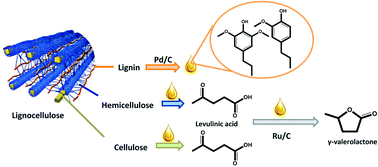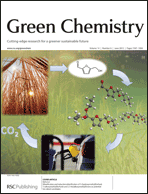Cigarette filters that have been inappropriately discarded are a major environmental problem, making up a large proportion of litter, as the filters themselves can take years to degrade. In a bid to tackle this, researchers in the US have developed a cigarette filter with accelerated degradation.
 Raymond Robertson from the acetate business of Celanese Corporation, Narrows, Virginia, has been working with colleagues to develop a filter that contains a controlled-release organic acid to catalyse the hydrolysis of the filter material – cellulose acetate polymer. ‘Our work focuses on expediting the filter degradation back to cellulose and acetic acid using edible materials, such as citric acid and ascorbic acid (vitamin C), to help promote the filter degradation rate,’ he says. ‘Increasing the degradation rate decreases the filter persistence in the environment.’
Raymond Robertson from the acetate business of Celanese Corporation, Narrows, Virginia, has been working with colleagues to develop a filter that contains a controlled-release organic acid to catalyse the hydrolysis of the filter material – cellulose acetate polymer. ‘Our work focuses on expediting the filter degradation back to cellulose and acetic acid using edible materials, such as citric acid and ascorbic acid (vitamin C), to help promote the filter degradation rate,’ he says. ‘Increasing the degradation rate decreases the filter persistence in the environment.’
The weak organic acid is encapsulated in the filter paper to protect it from premature degradation and to prevent a decrease in the product’s shelf life. Once the cigarette is used and discarded, environmental water (such as rainwater) breaches the protective layer. This releases the acid, which migrates into the filter, lowering the pH and triggering hydrolysis.
Zhenjiang Li from Nanjing University of Technology, China, comments: ‘It is a remarkable breakthrough in addressing the cigarette filter pollution.’ A researcher in the fields of green chemistry and polymers, Li is impressed with the results. ‘The team have combined simple chemistry with current industrial processes.’
For Robertson, future developments involve refining the technology to suit a variety of environments, such as developing a coating and release technology that can work in very wet conditions.
Reproduced from a Chemistry World story written by Rebecca Brodie
This article is free to access for 6 weeks! Click on the link below to find out more…
Accelerated degradation of cellulose acetate cigarette filters using controlled-release acid catalysis, Raymond M. Robertson, William C. Thomas, Jitendrakumar N. Suthar and David M. Brown, Green Chem., 2012, DOI: 10.1039/C2GC16635F
Stay up-to-date with the latest content in Green Chemistry by registering for our free table of contents alerts.




















